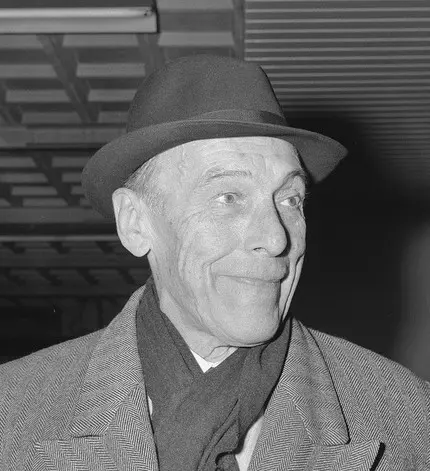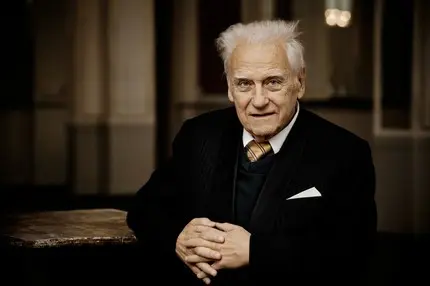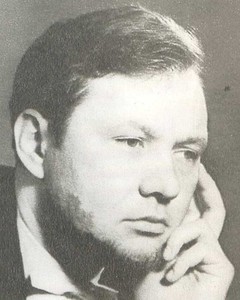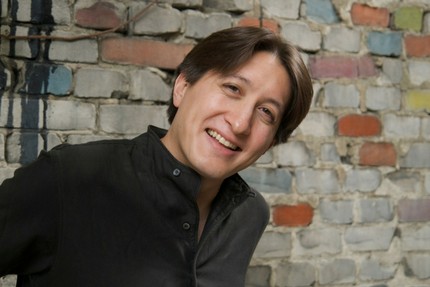
Alexander Brailovsky |
Alexander Brailowsky

At the beginning of the 20th century Sergei Rachmaninov visited the Kyiv Conservatory. In one of the classes, he was introduced to an 11-year-old boy. “You have the hands of a professional pianist. Come on, play something,” Rachmaninov suggested, and when the boy finished playing, he said: “I’m sure you are destined to be a great pianist.” This boy was Alexander Brailovsky, and he justified the prediction.
… The father, the owner of a small music shop in Podil, who gave the boy his first piano lessons, soon felt that his son was indeed extraordinarily talented, and in 1911 took him to Vienna, to the famous Leshetitsky. The young man studied with him for three years, and when the world war broke out, the family moved to neutral Switzerland. The new teacher was Ferruccio Busoni, who completed the “polishing” of his talent.
Brailovsky made his debut in Paris and made such a sensation with his virtuosity that contracts literally rained down from all sides. One of the invitations was, however, unusual: it came from a passionate admirer of music and an amateur violinist, Queen Elizabeth of Belgium, with whom he often played music since then. It took only a few years for the artist to gain worldwide fame. Following the cultural centers of Europe, New York applauds him, and a little later he became the first European pianist to “discover” South America – no one played there so much before him. Once in Buenos Aires alone, he gave 17 concerts in two months! In many provincial cities of Argentina and Brazil, special trains were introduced to take those who wanted to listen to Brailovsky to the concert and back.
Triumphs of Brailovsky were associated, first of all, with the names of Chopin and Liszt. Love for them was instilled in him by Leshetitsky, and he carried it through his whole life. In 1923, the artist retired for almost a year in the French village of Annecy. to prepare a cycle of six programs dedicated to the work of Chopin. It included 169 works that he performed in Paris, and for this the concerto was provided with a Pleyel piano, which F. Liszt was the last to touch. Later, Brailovsky repeated similar cycles more than once in other cities. “Chopin’s music is in his blood,” wrote The New York Times after his American debut. A few years later, he devoted significant cycles of concerts in Paris and London to Liszt’s work. And again, one of the London newspapers called him “The Sheet of Our Time.”
Brailovsky has always been accompanied by exceptionally rapid success. In different countries he was met and seen off with a long standing ovation, he was awarded orders and medals, awarded prizes and honorary titles. But professionals, critics were mostly skeptical about his game. This was noted by A. Chesins, who wrote in his book “Speaking of Pianists”: “Alexander Brailovsky enjoys a different reputation among professionals and among the public. The scale and content of his tours and contracts with record companies, the devotion of the public to him made Brailovsky a mystery in his profession. By no means a mysterious person, of course, since he always aroused the most ardent admiration of his colleagues as a person … Before us is a man who loves his work and makes the public love him, year after year. Perhaps this is not a pianist of pianists and not a musician of musicians, but he is a pianist for the audience. And it’s worth thinking about.”
In 1961, when the gray-haired artist toured the USSR for the first time, Muscovites and Leningraders were able to verify the validity of these words and try to solve the “Brailovsky riddle”. The artist appeared before us in excellent professional form and in his crowning repertoire: he played Bach’s Chaconne – Busoni, Scarlatti’s sonatas, Mendelssohn’s Songs Without Words. Prokofiev’s third sonata. Liszt’s sonata in B minor and, of course, many works by Chopin, and with the orchestra – concerts by Mozart (A major), Chopin (E minor) and Rachmaninov (C minor). And an amazing thing happened: perhaps for the first time in the USSR, the public and critics agreed on Brailovsky’s assessment, while the public showed high taste and erudition, and criticism showed benevolent objectivity. Listeners brought up on much more serious models, who learned to discover in works of art and their interpretation, first of all, a thought, an idea, could not unconditionally accept the straightforwardness of Brailovsky’s concepts, his desire for external effects, which looked old-fashioned to us. All the “pluses” and “minuses” of this style were precisely defined in his review by G. Kogan: “On the one hand, a brilliant technique (except for octaves), an elegantly honed phrase, a cheerful temperament, rhythmic“ enthusiasm ”, captivating ease, liveliness, energy performance, the ability to “present” even that which, in fact, “does not come out” in such a way as to arouse the delight of the public; on the other hand, a rather superficial, salon interpretation, dubious liberties, a very vulnerable artistic taste.
The foregoing does not mean that Brailovsky was not at all successful in our country. The audience appreciated the great professional skill of the artist, the “strength” of his game, its inherent brilliance and charm at times, and its undoubted sincerity. All this made the meeting with Brailovsky a memorable event in our musical life. And for the artist himself, it was essentially a “swan song”. Soon he almost stopped performing in front of the public and recording records. His last recordings – Chopin’s First Concerto and Liszt’s “Dance of Death” – made in the early 60s, confirm that the pianist did not lose his inherent virtues until the end of his professional career.
Grigoriev L., Platek Ya.





